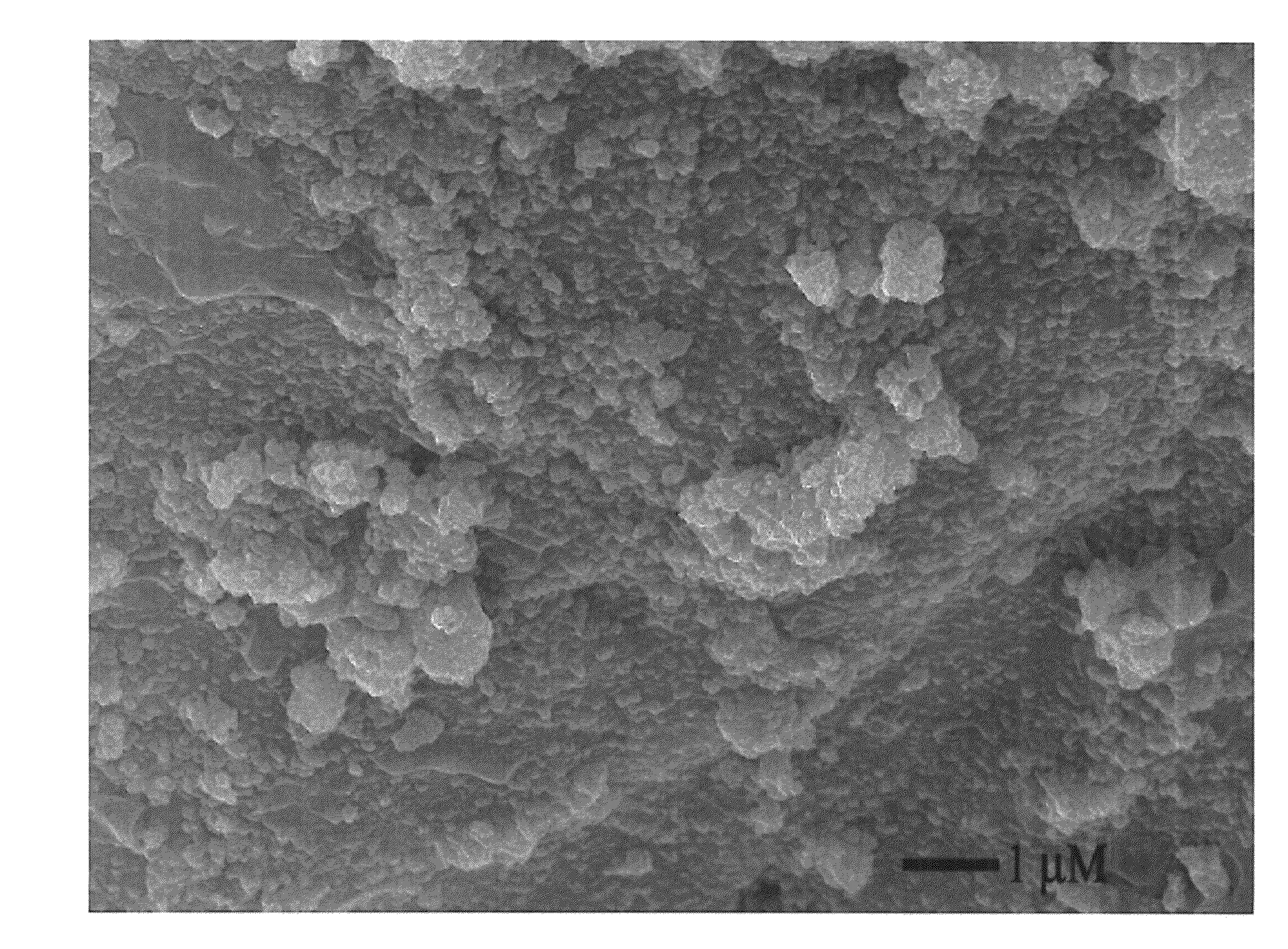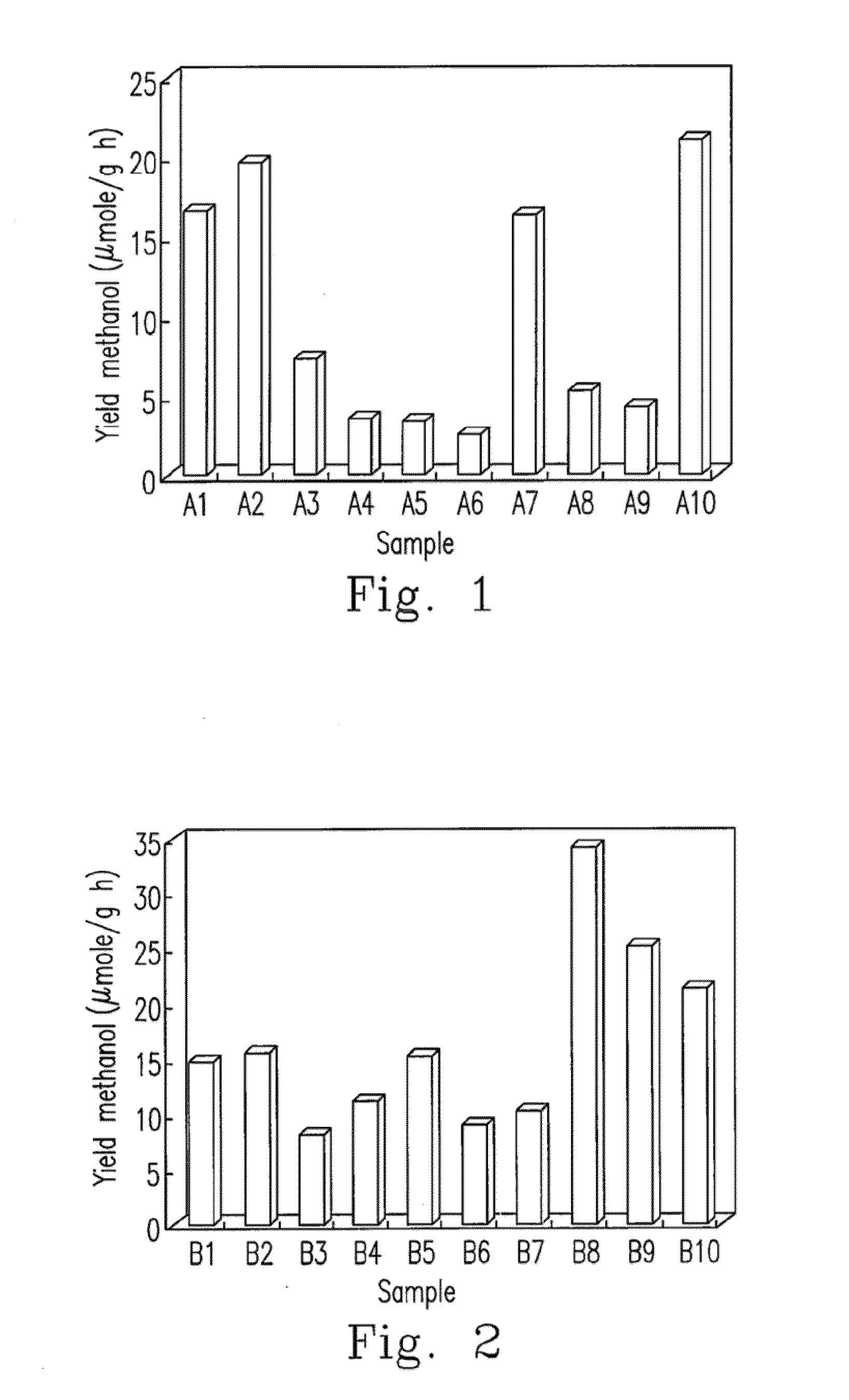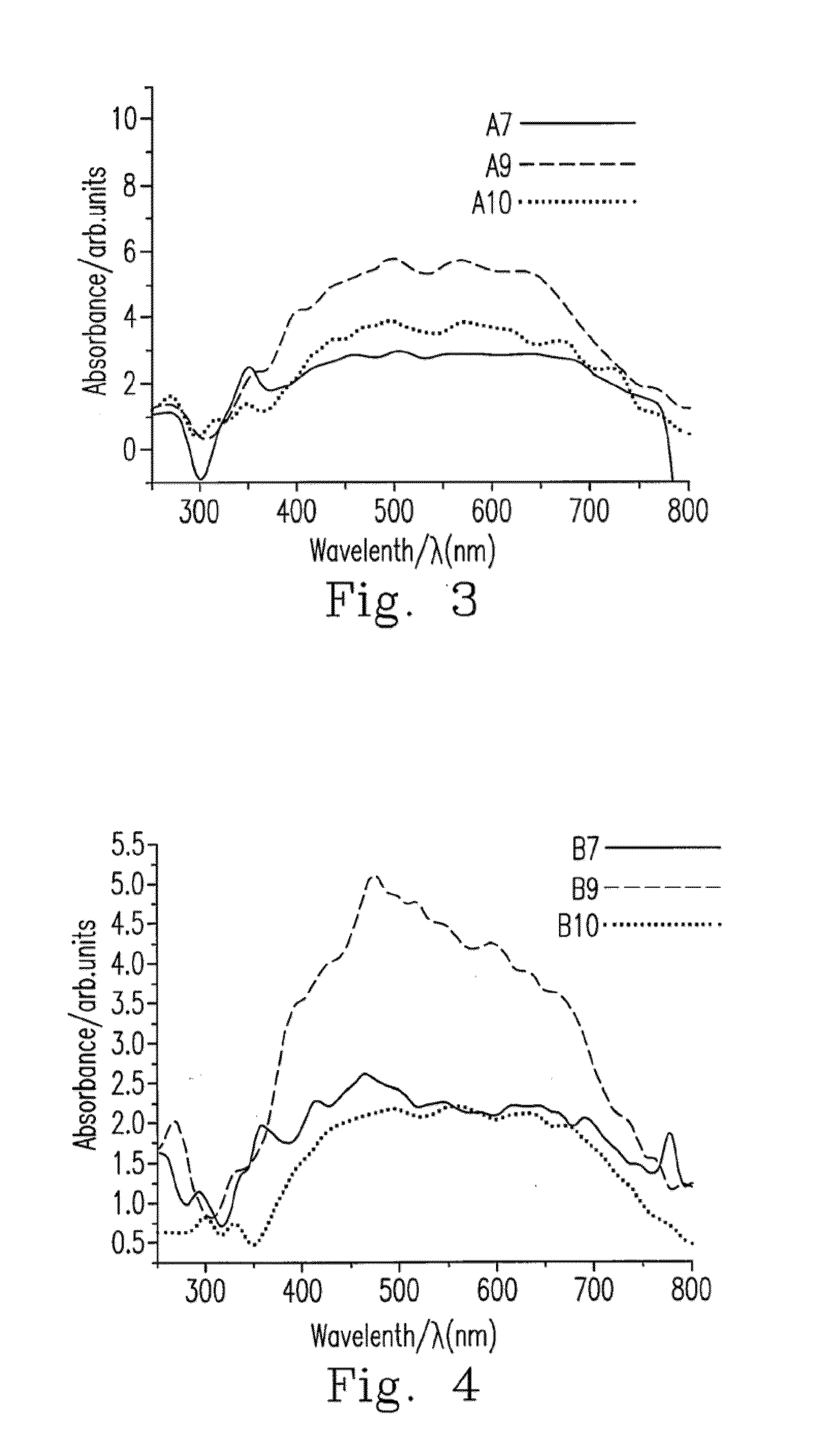Metallic sulfide photocatalyst for carbon dioxide reduction and the preparation for the same
a photocatalyst and carbon dioxide technology, applied in the field of photocatalysts, can solve the problems of significant influence on the application value, inability to meet the economic efficiency, and cost the abundance of energy and hea
- Summary
- Abstract
- Description
- Claims
- Application Information
AI Technical Summary
Benefits of technology
Problems solved by technology
Method used
Image
Examples
embodiment 1
Preparation of Sulfide Photocatalyst
[0042]Cuprous chloride, silver nitrate, indium nitrate and zinc nitrate were dissolved in deionized water based on the stoichiometric coefficient, and aqueous ammonia was added to obtain a salt solution with a total concentration of 0.01 mole / L to 0.2 mole / L. Next, thioacetamide was dissolved in deionized water to obtain a thioacetamide solution with a concentration of 0.1 mole / L to 1 mole / L. The thioacetamide solution, more than 5× quantities, was added with stirring to the salt solution at a rate of 0.01 mL / min to 2 mL / min at room temperature, and stirring was succeeded for at least 1 min to form the mixture solution. The mixture solution was filtered, washed, and dried in the oven at 25° C. to 600° C. for 1 to 12 hours. A photocatalyst with a formula of CuxAgyInzZnkSj was yielded after comminuting.
[0043]Rubidium chloride was added to the solution of CuxAgyInzZnkSj photocatalyst at a weight ratio of 0.00 to 0.01, and the CuxAgyInzZnkSj photocata...
example 1
[0045]The preparation method of AgInZnS photocatalyst is described as follows. 1) Silver nitrate, indium nitrate and zinc nitrate were dissolved in deionized water based on the stoichiometric coefficient of Ag:In:Zn=1:1:7, and aqueous ammonia was added to obtain the salt solutions with a total concentration of 0.01, 0.01 and 0.07 mol / L respectively. 2) Thioacetamide was dissolved in deionized water to obtain a thioacetamide solution (0.1 mole / L). 3) The thioacetamide solution, more than 5× quantities, was added dropwise with stirring to the salt solution at 2 mL / min at room temperature, for form the mixture solution. After addition, stirring was succeeded for 1 h to form the mixture solution. 4) The obtained mixture solution was filtered, washed, and dried in the oven at 100° C. for 12 hours, and the metallic sulfide photocatalyst was yielded after comminuting.
example 2
[0046]The preparation method of Ru(a) / CuxAgyInzZnkSj photocatalyst is described as follows. 1) Cuprous chloride, silver nitrate, indium nitrate and zinc nitrate were dissolved in deionized water based on the stoichiometric coefficient of Cu:Ag:In:Zn=1:1:1:7, and aqueous ammonia was added to obtain the salt solutions of 0.01, 0.01, 0.01 and 0.07 mol / L respectively. Step 2) to step 4) were the carried out as described in Example 1, and thus CuxAgyInzZnkSj photocatalyst was obtained. 5) Rubidium chloride at a weight ratio of 0.01 was added to the solution of CuxAgyInzZnkSj photocatalyst, which then was reduced as Ru(a) / CuxAgyInzZnkSj photocatalyst under the xenon illumination, dried in the oven at 100° C. for 4 h, and comminuted to yield the powder of Ru(a) / CuxAgyInzZnkSj photocatalyst.
PUM
| Property | Measurement | Unit |
|---|---|---|
| temperature | aaaaa | aaaaa |
| temperature | aaaaa | aaaaa |
| temperature | aaaaa | aaaaa |
Abstract
Description
Claims
Application Information
 Login to View More
Login to View More - R&D
- Intellectual Property
- Life Sciences
- Materials
- Tech Scout
- Unparalleled Data Quality
- Higher Quality Content
- 60% Fewer Hallucinations
Browse by: Latest US Patents, China's latest patents, Technical Efficacy Thesaurus, Application Domain, Technology Topic, Popular Technical Reports.
© 2025 PatSnap. All rights reserved.Legal|Privacy policy|Modern Slavery Act Transparency Statement|Sitemap|About US| Contact US: help@patsnap.com



